
|

|
Forum Index : Windmills : Slip Rings
| Author | Message | ||||
Downwind Guru Joined: 09/09/2009 Location: AustraliaPosts: 2333 |
To follow on from a previous thread i posted a photo of some slip rings i made using copper pipe and car alternator brushes. Firstly this setup has not flown yet, so is not proven to be a good or a bad design. Its one of the few parts i have built for a current AXFX mill in the process of design and building. It uses a hub assembly from the rear of a front wheel drive car. The whole AXFX mill is being designed around using these hub Assembly's, as they are made perfect for the job i think. It is a direct bolt in item and eliminates the need to align the stub axle and weld into place. As i had picked up 2 of these hub Assembly's from the wreckers and one was used for the mill itself i thought it would be nice to use the other for the yaw bearing, this meant i need slip rings. Without a lathe, i set about how i could create some slip rings around the hub assembly. The hub was built up with fiberglass and machined off by rotating it with a router mounted above. (i used my little cnc router for this) I cut some copper rings from 100mm copper pipe and reshaped them to 90mm dia. The fiberglass hub had grooves machined into it for the wires to slide into and other grooves for resin to be poured into to lock the rings in place. The wires were soldered to the inside of each ring The rings were slid onto the fiberglass hub with spacers of 90mm PVC storm water pipe between the rings to hold everything square and in its place. This was then all wrapped in duct tape so no resin could get onto the outer of the copper rings. Resin was poured into the grooves and allowed to set. The PVC spacers was cut with a craft knife and removed. The rings was then wrapped in tape again and the tape cut away from between the rings. The gap now between the rings was wrapped with glass strands pulled from some woven glass matting. The glass strands was wetted out with resin and allowed to set. The tape was then removed while the resin was firm but not fully cured. The brush holders was taken from old automotive alternator regulators, and spaced the suit the rings then all glassed together to form a single block. Some copper strips was added for the brush wires to solder to as well as the cables. 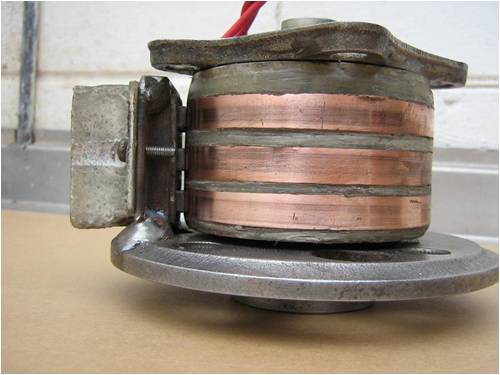
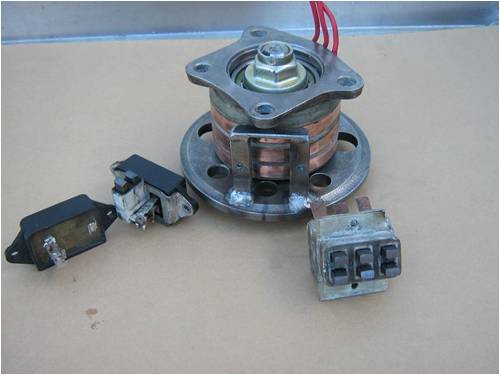
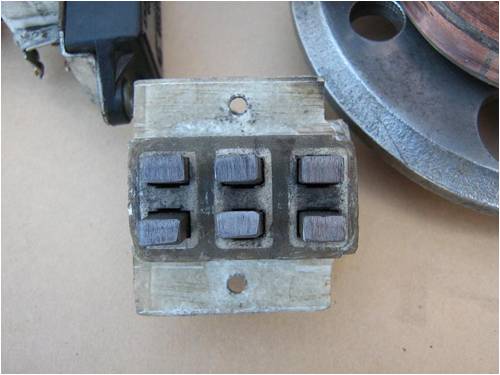
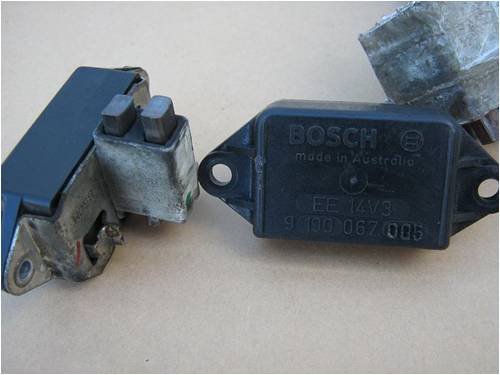
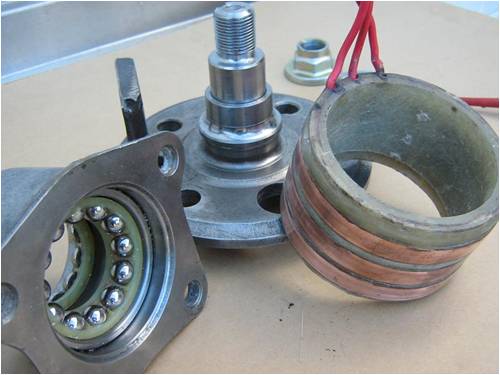
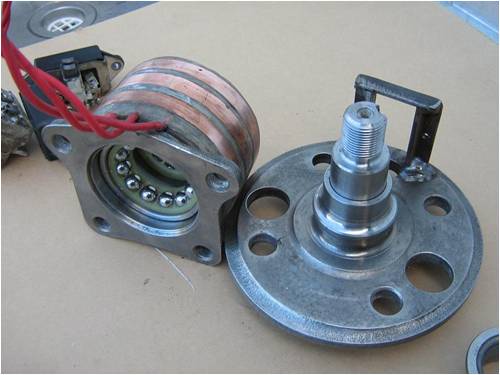
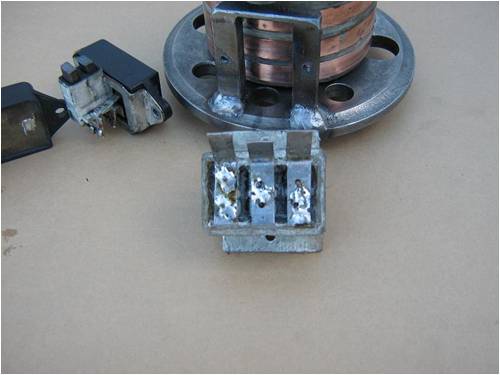
Pete. Sometimes it just works |
||||
| GWatPE Senior Member Joined: 01/09/2006 Location: AustraliaPosts: 2127 |
Hi readers, These bearing assemblies are certainly a proven component in the car. They are certainly a lot more precise than typical stub axle assemblies that are commonly used. The nice aspect is the parallel surfaces that are built in. They certainly are suitable for the Yaw bearing and the main rotor bearings. The precise nature and physical shape is ideal for mounting the sliprings. Many use tube in tube bearings, and these are notoriously sloppy and if used with slip rings, lifetime problems usually crop up. The use of wrecked car components is certainly a great choice if the component does the job in a superior way. Probably cheaper than a stub axle assembly as well. A great find Pete. Gordon. become more energy aware |
||||
| shawn Senior Member Joined: 30/03/2010 Location: New ZealandPosts: 210 |
Hi pete love those slip rings and am thinking of putting some on my new mill. one concern (for me) is would they carry the current of a big mill say like glens new mill? |
||||
| Altenergy Newbie Joined: 19/09/2010 Location: South AfricaPosts: 7 |
Hi Pete and others Thanks, now we can see it more clearly. As they say "Great minds think alike!" As you know from the previous thread, i had similar ideas but now you have posted yours it gives me wider scope. I Will read it at a leasurely pace and try and absorbe it all. Leon Happy Solarwinds |
||||
Downwind Guru Joined: 09/09/2009 Location: AustraliaPosts: 2333 |
Hi Shawn, I really have no idea of what current it can handle, but intend to find out. (the hard way) I see no reason the rings wont handle the current but not 100% sure on the brushes. Then there is plan B' that is to add a second block of brushes opersite the first set if needed. From what im told about the brushes in the Chinese mills they are not that large and they handled the 1600 watts that Amack was pumping through them. Its a ....Nothing ventured nothing gained....project this one. Pete. Sometimes it just works |
||||
| GWatPE Senior Member Joined: 01/09/2006 Location: AustraliaPosts: 2127 |
Hi Pete, I see the current carying capacity of the brushes and rings as easy to test. It would be easy to wrap a couplke of turns around the core of a torroidal transformer. I have a few 1.5kW torroids that you could borrow. Easy to get 20-100A AC if needed. Just measure the volts across the brush and any heating will also be evident. This is how I tested the slip rings on my mill without waiting for a storm. Gordon. become more energy aware |
||||
Downwind Guru Joined: 09/09/2009 Location: AustraliaPosts: 2333 |
Hi Gordon, Thats sounds like a plan, and much better than hitting it with the arc welder to find out. I guess a microwave transformer with the secondarys removed and a few turns of heavy cable in their place would work well to. Just a bugger to get the cable around the core. As i have seen where others have built spot welders from microwave transformers. Pete. Sometimes it just works |
||||
Doug Regular Member Joined: 11/05/2010 Location: New ZealandPosts: 41 |
Hey Pete As for the issue of current handling capabilities of the brushes. Most of the automotive alternators these days are quite capable of putting out at least 90 to 100 amps. Another direction to look in also would be automotive starter motor brushes. These are usually solid copper based. Also most starter motors usually draw in excess of 200 amps when cranking an engine over so should be more that capable of handling anything a wind turbine could throw at them. Doug May The Power Be With You |
||||
Downwind Guru Joined: 09/09/2009 Location: AustraliaPosts: 2333 |
Hi Doug, I didnt think of using starter brushes, as i was more after the brush holders than the brushes. Brushes are easy bought but a suitable holder is not so easy to source. I will give it a load test with a large transformer in the next few days to see what they can handle. Pete. Sometimes it just works |
||||
| shawn Senior Member Joined: 30/03/2010 Location: New ZealandPosts: 210 |
Thanks pete guess they will be worth a rethink i emailed ecoinervation about there rings and he said they would not handle anymore than 100 amps and his looked heavy duty he said they are, and had two sets of brushes on. I am slow at building mills so you guys will have all this sorted before mine is ready to fly! Pic up lazer cut plates next week.  |
||||
Downwind Guru Joined: 09/09/2009 Location: AustraliaPosts: 2333 |
I done a load test on the slip rings with a large 12 volt AC transformer. With 60 amp through a single slip ring / brush set i had a 1-2C degree rise in temperture anywhere around the brushes and no difference around the copper ring over 5 minutes, measured with a infra red thermometer, no arcing as they rotated. The power cables measured a rise of 30C degrees, and the 2 foot of light fencing wire resistor used for load, glowed bright red, and burnt all the galv coating off the wire. Very happy with the results and feel they would take up to 100 amp at a push. 
If the mill is producing 60+ amp for a extended time, than i see no problem with the slip rings handling it. 60amp mill power will be split over 3 rings and the load test was done over a single ring. That would equal 180 amp over 3 rings. Pete. Sometimes it just works |
||||
fillm Guru Joined: 10/02/2007 Location: AustraliaPosts: 730 |
Hi Pete , Nice work on the slip rings , by the looks of some of your post times you must be a bit of a night owl . I was corrected recently about my thinking that 3phases through slip rings is shared, so I will through it out to the forum as well. If the alternator is making 60A DC rectified then each slip ring will be seeing 60A Ac at the peaks , and not 20A per phase combined to make 60ADc. This would make the 3 phase rec a voltage multiplier/rectifer. PhillM ...Oz Wind Engineering..Wind Turbine Kits 500W - 5000W ~ F&P Dual Kits ~ GOE222Blades- Voltage Control Parts ------- Tower kits |
||||
Downwind Guru Joined: 09/09/2009 Location: AustraliaPosts: 2333 |
[quote]you must be a bit of a night owl [/quote] Thats why i want a generator as im running out of midnight oil. 
Anyone know a cheap supplier of midnight oil as its getting hard to find. Pete. Sometimes it just works |
||||
AMACK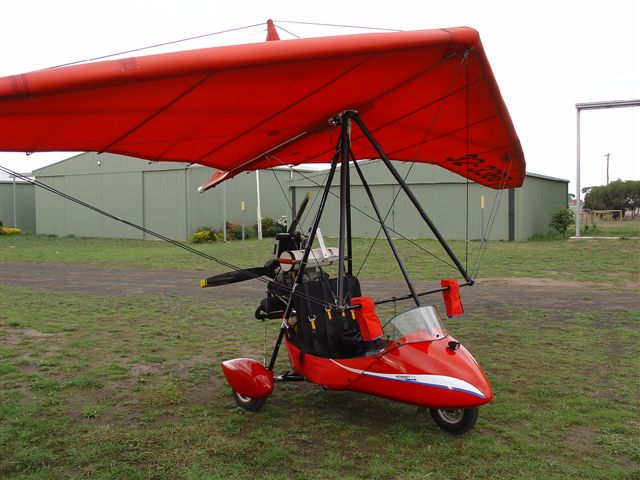 Senior Member Joined: 31/05/2009 Location: AustraliaPosts: 184 |
Pete, Try Peter Garrit he is full of something, might not be oil but. *Note to self 1. Make it thick 2.Make it heavy. 3.Make it stronger than it should be. 4. Don't rush the first job as the second job will cost more and take mor |
||||
Downwind Guru Joined: 09/09/2009 Location: AustraliaPosts: 2333 |
Hi Amack, Yes there is oil in him but unfortunately it is snake oil 
Pete. Sometimes it just works |
||||